Knee Replacement Recovery and Physical Therapy Rehabilitation
After knee replacement surgery, recovery typically involves physical therapy, gradually increasing activity levels, and potentially requiring assistive devices like a walker or cane for a few weeks. You’ll likely experience pain and swelling, but these should improve over time with proper care and exercise.
Recovering from knee replacement surgery requires a comprehensive plan to ensure optimal healing and a return to daily activities. Below is a guide to assist you through this journey.
Jump to A Section
Keep Your Knee Straight
After surgery, it’s crucial to maintain your knee in a straight position to promote proper healing. Avoid placing pillows under your knee while lying down, as this can lead to joint stiffness. Instead, keep your leg and foot pointing straight ahead when sitting or lying down. Additionally, avoid sitting in the same position for 30 to 45 minutes and use a firm chair with armrests and a straight back, instead of stools, soft sofas, or low seats.
Watch Your Step
Protecting your new knee joint is essential. Use assistive devices like crutches or walkers for the first four to six weeks post-surgery to ensure stability. When moving, take small steps and always keep your toes pointed straight ahead to avoid unnecessary strain on the knee. Wearing sturdy shoes with non-slip soles can also prevent accidental slips and falls.
Use Your Medical Devices
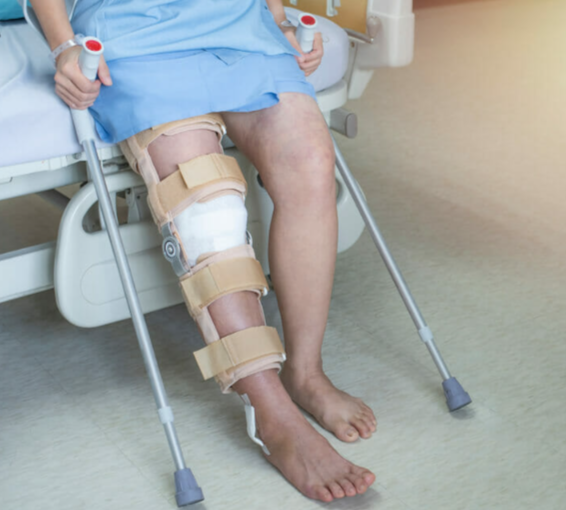
Adhering to the use of prescribed medical devices aids in a smoother recovery. These tools provide stability and support to the healing joint. Always follow the guidelines provided by your healthcare provider regarding their use. The following are a few devices used to aid in recovery, reduce pain, and improve mobility after knee replacement surgery:
- Knee brace
- Compression wraps
- Ice packs
- Walker
- Crutches
- Cane
- Compression stockings
- Resistance bands
Schedule Physical Therapy Sessions
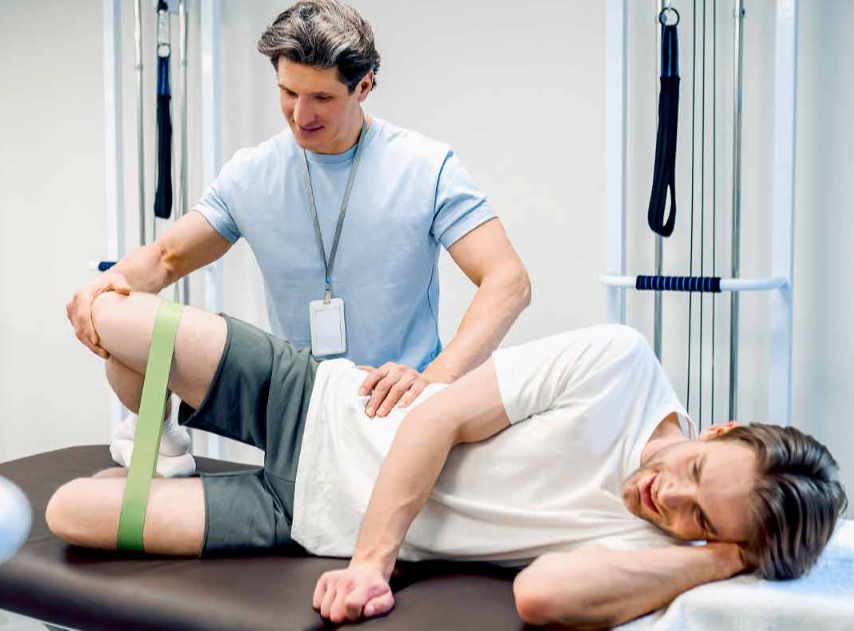
Physical therapy is essential after knee surgery because it promotes healing, restores mobility, and prevents complications. Without proper rehabilitation, the knee joint can become stiff, weak, and prone to further injury. A structured physical therapy program from our helpful McHenry physical therapists helps reduce pain and swelling while gradually improving strength, flexibility, and range of motion. It also retrains muscles to support the knee properly, enhancing stability and reducing the risk of future issues. Additionally, guided physical therapy exercises improve circulation, lowering the risk of blood clots and promoting faster recovery. By following a tailored McHenry physical therapy plan, patients can regain function, return to daily activities, and improve their overall quality of life.
Participating in physical therapy is vital for regaining strength and mobility. Customized exercises may include:
- Walking: Promotes circulation and mobility.
- Leg Presses with Resistance Bands: Strengthens leg muscles.
- Knee Extensions and Bends: Enhances flexibility.
- Swimming: Provides low-impact cardiovascular exercise.
Always consult with your expert physical therapist near you before starting any new activity to ensure it’s appropriate for your recovery stage. Our experienced physical therapists are adept at handling post-knee replacement as well as any knee pain treatment you need. Physical therapy for knee replacement surgery will likely last about 12 weeks, if you are wondering how long physical therapy will take.
Maintain a Healthy Diet
Maintaining a healthy diet after knee surgery is crucial for a smooth recovery, as proper nutrition supports healing, reduces inflammation, and strengthens the body. Protein-rich foods aid in muscle repair and tissue regeneration, while vitamins and minerals like vitamin C, vitamin D, and calcium promote bone health and collagen formation. Anti-inflammatory foods, such as leafy greens, berries, and omega-3-rich fish, can help reduce swelling and pain. Staying hydrated and consuming fiber-rich foods also prevent post-surgical complications like constipation, which can be caused by pain medications. A well-balanced diet not only accelerates healing but also provides the energy needed for physical therapy, ultimately helping patients regain strength and mobility more effectively.
- Proteins: Aid in tissue repair.
- Vitamins and Minerals: Support overall health.
- Fiber: Ensures digestive health, especially if pain medications are in use.
Staying hydrated and limiting processed foods can further enhance recovery.
Manage Pain and Swelling In Your Knee
Managing pain and swelling after knee surgery is essential for a successful recovery, as uncontrolled discomfort can hinder movement, delay healing, and increase the risk of complications. Swelling can lead to stiffness and reduced range of motion, making physical therapy more challenging. If you are wondering when you should go to physical therapy, the answer is soon. Our physical therapy team can help you with healthy aging, and strength and endurance training to help you get back on your feet quickly. Effective pain and swelling management helps patients stay mobile, participate in rehabilitation exercises, and regain function more quickly.
Post knee replacement surgery, managing pain and swelling is crucial. Strategies include:
- Medication: Take as prescribed by your healthcare provider.
- Ice Therapy: Apply ice packs to reduce swelling.
- Elevation: Keep your leg elevated when resting to decrease swelling.
Monitoring for signs of infection, such as increased redness or fever, is also important.
Stay Active
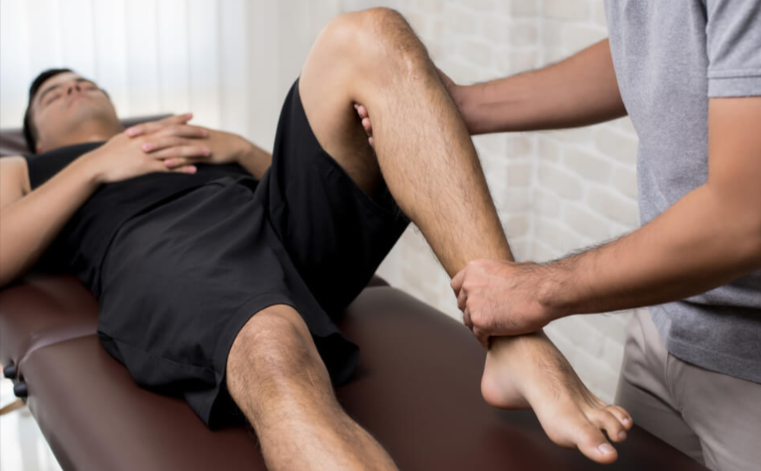
Staying active after knee surgery is crucial for a successful recovery, as movement helps prevent stiffness, improves circulation, and strengthens the muscles that support the knee. While rest is important in the early stages, prolonged inactivity can lead to muscle weakness, joint stiffness, and an increased risk of complications such as blood clots. Engaging in low-impact activities and physical therapy exercises helps restore range of motion, improve balance, and rebuild strength, making it easier to return to daily activities. Gentle movements, such as walking with support or performing prescribed exercises, also reduce swelling and promote faster healing. By staying active in a controlled and guided manner, patients can enhance their recovery, regain mobility, and improve overall knee function.
Follow Your Healthcare Provider’s Instructions
Adherence to the guidelines provided by your surgeon and physical therapist ensures a safe and effective recovery. Regular follow-up appointments allow for monitoring progress and addressing any concerns promptly. Our nearby physical therapists will discuss key benefits and physical therapy goals to make sure we get you back on your feet as soon as we can.
Best Sitting Position After Knee Replacement
After knee replacement surgery, aim for a firm chair with a straight back and armrests, keeping your knees and feet pointed straight ahead and avoiding prolonged sitting.
Proper sitting posture is essential to avoid strain on the knee and promote healing. Here are key guidelines:
- Use a firm, straight-backed chair: Avoid soft sofas, recliners, or low chairs that may strain your knee when getting up.
- Keep your feet flat on the floor: This helps with balance and stability.
- Sit with your knees at or slightly below hip level: This reduces unnecessary stress on the joint.
- Avoid crossing your legs: This can put pressure on the knee and hinder proper healing.
- Use armrests: They assist with standing up and sitting down safely.
Top 5 Physical Therapy Exercises Post Knee Replacement
After knee surgery, performing the right exercises is essential for regaining strength, flexibility, and mobility while preventing complications. The top five exercises typically focus on improving the range of motion, strengthening the muscles surrounding the knee, enhancing balance, and promoting circulation. Gentle stretching movements help reduce stiffness and gradually restore flexibility, while targeted strengthening exercises build stability and support the knee joint. Controlled weight-bearing activities improve balance and coordination, making it easier to transition back to normal movements. Low-impact exercises encourage blood flow, reducing swelling and the risk of blood clots. Finally, functional movement drills help retrain the muscles and joints to perform everyday activities safely and efficiently. A well-rounded rehabilitation program incorporating these types of exercises ensures a smoother recovery and long-term knee health.
Here are the five best physical therapy exercises for post-knee replacement recovery:
1. Heel Slides – Improves knee flexibility by gently bending and straightening the knee while lying down.
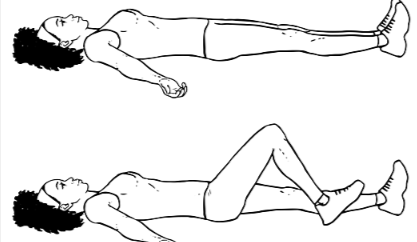
2. Quad Sets – Strengthens the quadriceps by tightening the thigh muscle while keeping the leg straight.
3. Straight Leg Raises – Enhances knee stability by lifting the leg while keeping it straight, activating the thigh muscles.
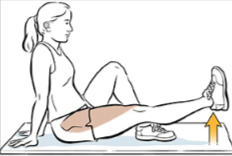
4. Seated Knee Extensions – Helps improve range of motion by slowly extending the knee while seated.
5. Standing Hamstring Curls – Strengthens the hamstrings by bending the knee backward while standing with support.
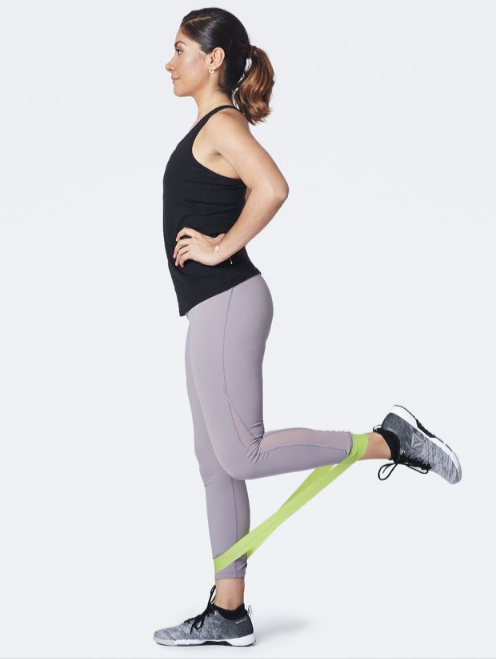
These exercises should be performed under the guidance of a physical therapist near you to ensure proper form and effectiveness.
Contact an Experienced McHenry Physical Therapy Clinic Near You

Fill out the contact form or give us a call at 815-451-4502 to see how we can start you on your journey and help you live pain-free!
At Red Rock Physical Therapy & Wellness, we are committed to supporting you through every step of your recovery journey. Our personalized rehabilitation programs are designed to meet your unique needs, ensuring a return to the activities you love.
For more information or to schedule an appointment, please contact us today.
Please note: This guide is for informational purposes only and should not replace professional medical advice. Always consult with your healthcare provider for personalized recommendations.

